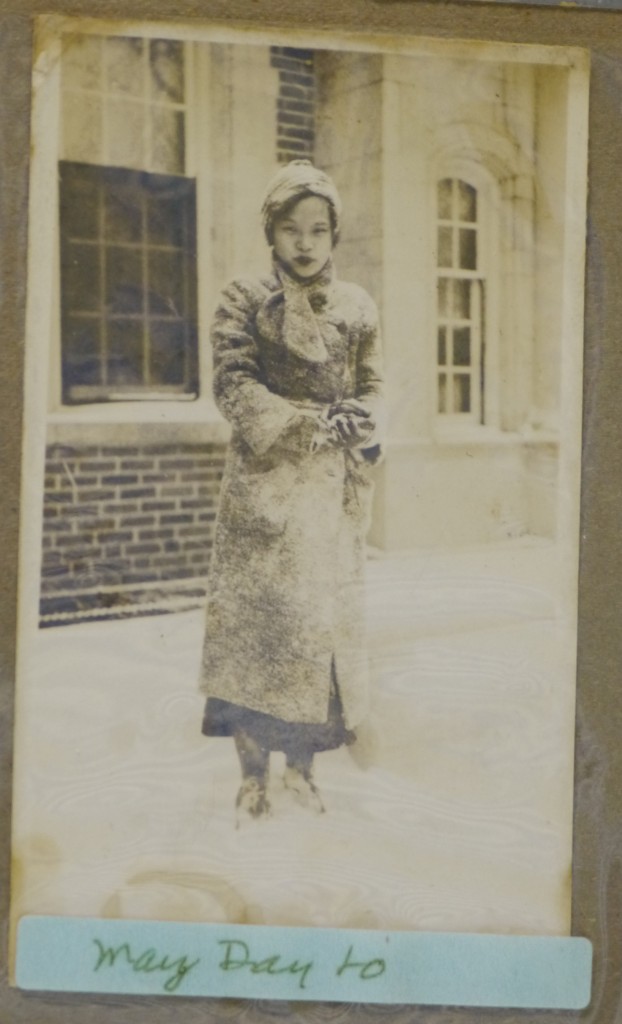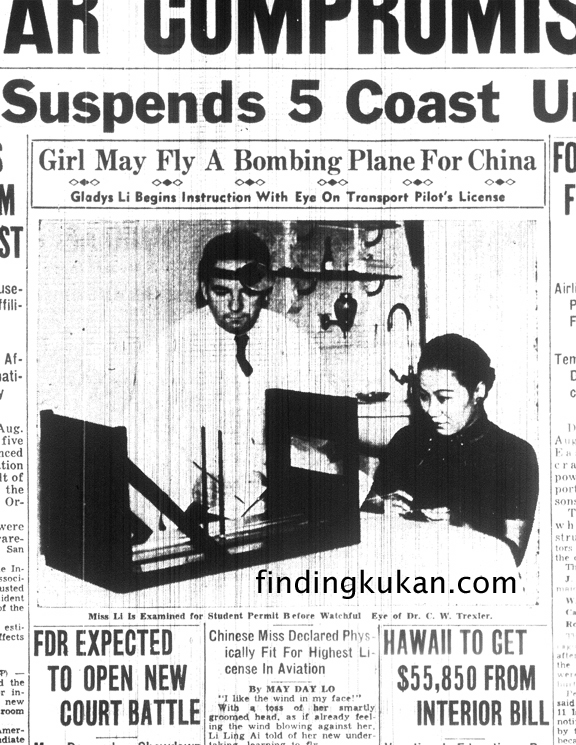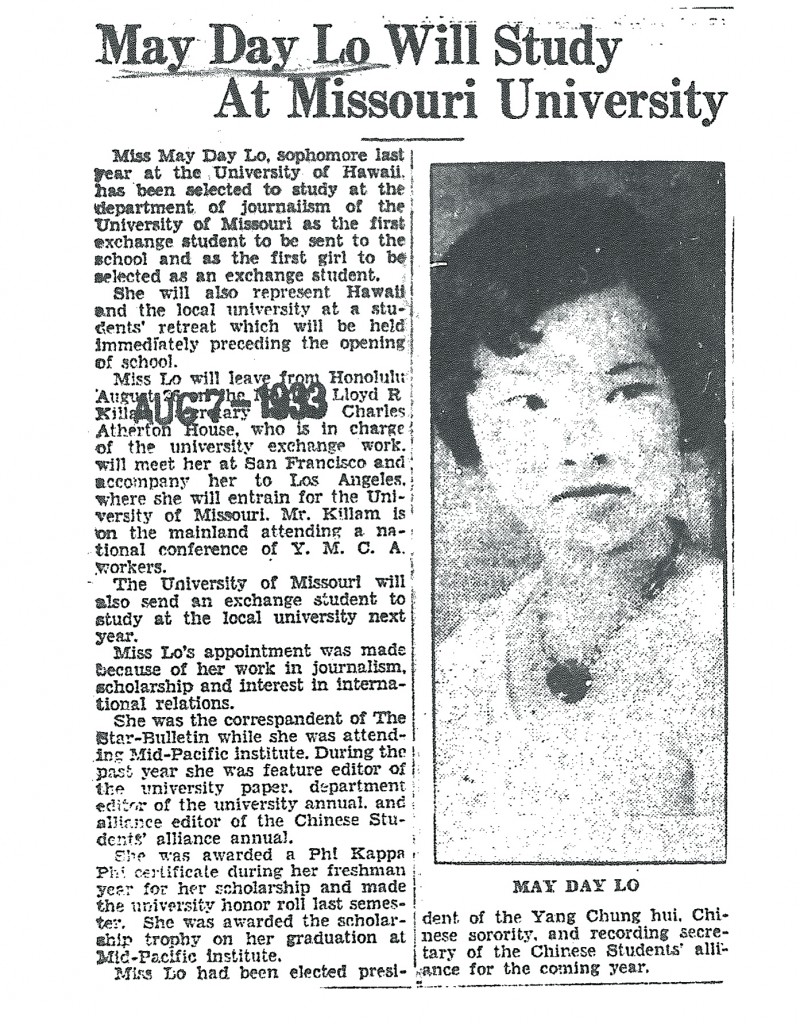A blog in support of FINDING KUKAN’s 10K in 10weeks “Keep This Film Alive Campaign”.
In the Lily Wu detective novels by Juanita Sheridan one of the colorful sidekicks is a female reporter named Steve (Stephanie Dugan) who funnels information to her two amateur detective friends Lily and Janice. Since many of her fictional characters are based on real life people, I wondered if Sheridan based Steve on some of the ballsy female reporters who were breaking into newsrooms in the 1930s. So my ears pricked when I heard that Li Ling-Ai had a journalist friend in the 30s and 40s named May Day Lo. Yes, that is her real name, and no she was not even born in May.

May Day Lo at the University of Missouri (photo courtesy Susan Cummings)
In the mid 1930s May Day Lo made history by being one of the first Asian American women hired to report for a major daily newspaper. The progressive Honolulu Star-Bulletin hired Lo and Ah Jook Ku after they graduated from the University of Missouri Journalism School. May Day Lo also broke ground at Journalism School by being the first “exchange student” accepted there (remember, Hawaii was still a territory and not officially part of the United States).
Notably, in 2010 when the Asian American Journalists Association put together a list of pioneering Asian journalists, a majority of them were from Hawaii. AAJA historian Chris Chow commented, “Hawaii was more open to multiculturalism. There was recognition that this is an important market and you’d better well serve them (Asian-Americans) if you want to make any money.”
Back in the 30’s, the Star Bulletin seemed to cover stories about local Asians more comprehensively than the rival Honolulu Advertiser. And May Day Lo’s byline was on several early articles written about Li Ling-Ai, including the one that probably prompted Advertiser reporter Rey Scott to call Li Ling-Ai into his office for an interview on that fateful night in 1937 when plans for making KUKAN were first hatched.

Reporter May Day Lo gives front page coverage to fellow Chinese American pioneer — Li Ling-Ai (aka Gladys Li)
I love knowing that a petite Chinese woman who was raised by a reverend in Hilo was the first exchange student at the prestigious University of Missouri School of Journalism and that the power of her pen brought attention to another pioneering Chinese young woman in a way that changed her life forever. I wanted to find out more about May Day Lo, especially when I found an intriguing letter from her to Li Ling-Ai:
July 31, 1941,
Dear Li Ling Ai,
Now that I am home again, it all seems like a dream that I met you and all the others in New York and had such a wonderful time…. Please give my Aloha to Mrs. James Young, Rey Scott and Mr. Ripley when you see them.
May Day Lo had been in New York right around the time when KUKAN premiered at the World Theater just off Broadway! She had met both Rey Scott and Robert Ripley – two key players in Li Ling-Ai’s life at the time. Could May Day hold clues to some of the unsolved mysteries surrounding KUKAN?
Unfortunately May Day had died in a tragic car accident in 1986. May Lee Chung, editor of the ACUW publication that documents so many pioneering Chinese women’s lives (see other posts about this “Orange Bible”), could remember clearly the circumstances of May Day’s death. But she did not know what had become of May Day’s only child David, someone who might be able to tell me more. The trail remained cold until the Power of the Press struck again in 2011. Stay tuned…
Support our 10K in 10 Weeks campaign by clicking the red button. 
(As of 9/6/13 we have raised $5,025 and have $4,975 more to raise by 10/15/13)




2 Responses to The Power of the Press: Part 1– May Day Lo